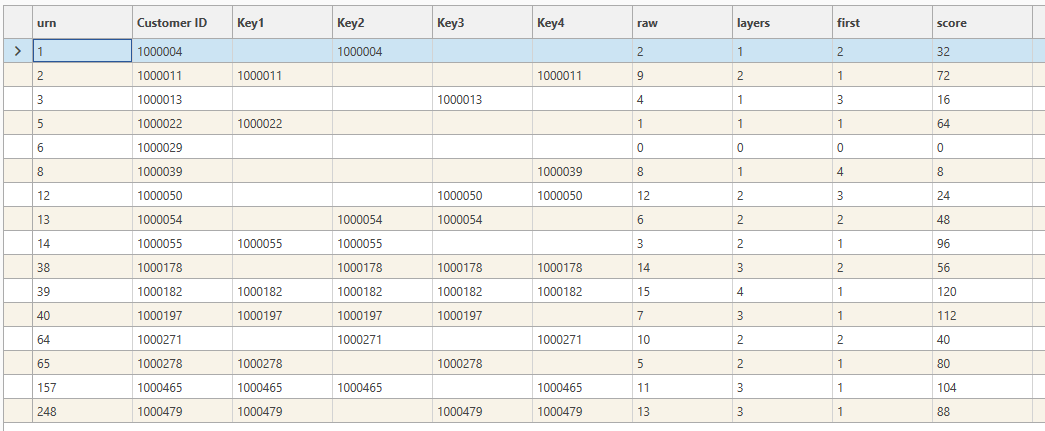General: JoinLayers
Join Analysis Functions
Purpose
Use these functions to:
- Count the number of layers that matched for each record in a join
- Find the first layer that matched for a record
- Obtain the binary value of matching layers
- Get a match score for each record
Return Value
| Property | Value |
|---|---|
| FieldType | Integer |
| FieldSize | Low |
| DataType | Discrete |
| DataSize | Short / Integer / LongInteger / Double |
Example Return Value: 
Parameters
| Parameter | JSON | Description |
|---|---|---|
| Table | “targetTable”: “foreigntablename” | Required. The foreign table in the join. |
| Filter | “dataset”: {DataSet_JSON} | Optional. If a filter is applied, records not in the filter recordset will be returned as null. |
| Function | "function":"joinlayers" | "joinlayers" |
| Primary Table | “p1”: “primarytablename” | Required. The primary table in the join. |
| Function | “p2”: "function" | Required. One of:
|
JSON Sample
{
"method": "BuildBakedField",
"targetTable": "DATA_DS1",
"overwrite": true,
"name": "dj_JL_Count_DS1",
"function": "joinlayers",
"p1": "customers",
"p2": "Count",
"project": "SharedLibrary"
}Usage Notes
First build the join, using AddJoin and AddJoinLayer. Then create JoinLayer fields.
At least one join layer must be present for JoinLayer functions to be calculated.
See Also:
- Engineering | Expression Field
- Joins
Example
| Example | Details |
|---|---|
| Description | Count join layers for each record in customer/transaction join |
| Input |
|